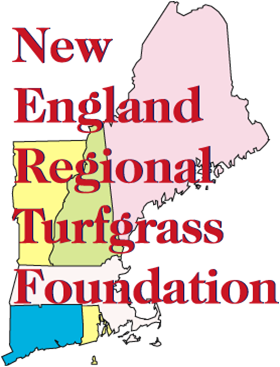
On November 16th, David Rosenberg and I boarded a plane to Myrtle Beach to take the opportunity of attending the Carolinas Golf Course Superintendents Association Conference and Trade Show. There are a lot of similarities to the New England Regional Turfgrass Conference and Show, but also some distinct differences. Some of the similarities observed are: their schedule like ours begins on a Monday, they do many workshops (similar to 1/2-day seminars) and have a high priority on education, the show floor sports between 350-375 booth spaces (over the last 3 years NERTF has averaged 370 booths), the trade show opens for 3 hours on Tuesday afternoon and NC/SC Sports Turf Managers also attend with a separate education program on Wednesday. There are many differences and I will list some:
1. They also have outdoor activities on Monday including a golf tournament and Sporting Clay (Skeet) event. Obviously they take advantage of being in a warmer climate and earlier in the calendar to do this.
2. Their seminars are 3 1/2-hours long and they offer many more (25 over the two days) with most of them on Tuesday.
3. The association is made up of Chapters of GCSAA and hence the show is predominately a Golf Course Superintendents Show (mini-GCSAA) until they added some space for NC/SC STMA for the 2nd year. They don't share the same program, registration process, or show activities but both entities use the tradeshow during the same hours.
4. Trade show is only open for 8 total hours over 2 days (Tuesday & Wednesday). They do have a 27-hole Challenge prize giveaway, similar to NERTF 9-hole challenge, that they charge exhibitors to participate in. This encourages full floor coverage by attendees if they participate and there are several prizes for superintendents and assistants.
5. Because the show is based by a members association they conclude their show week with many give-aways, then with a keynote address, and finally with an Annual Meeting.
Our overall opinion of the show is favorable and that it is well run, in a nice but somewhat isolated facility, the association members seem to support the show and come to Myrtle to participate and network within the industry. What I do find interesting is that when you have 2000 attendees and only 480 minutes of trade show, that equals only 15 seconds per attendee if everyone wanted to speak to you in your booth. That seems a little tight and may be a problem if the show continues to grow and as people compete in the 27-hole challenge it may become a distraction from the purpose of the tradeshow. When going to another show, we always seem to find either a few new exhibitors, or secure some assurances from other exhibitors that they will be attending our show, and always, we observe new ideas and pickup a few tidbits that could be useful in our attempt to make the New England Regional Turfgrass Conference and Show a little better than previous years. One great thing is there is no snow to worry about!
1. They also have outdoor activities on Monday including a golf tournament and Sporting Clay (Skeet) event. Obviously they take advantage of being in a warmer climate and earlier in the calendar to do this.
2. Their seminars are 3 1/2-hours long and they offer many more (25 over the two days) with most of them on Tuesday.
3. The association is made up of Chapters of GCSAA and hence the show is predominately a Golf Course Superintendents Show (mini-GCSAA) until they added some space for NC/SC STMA for the 2nd year. They don't share the same program, registration process, or show activities but both entities use the tradeshow during the same hours.
4. Trade show is only open for 8 total hours over 2 days (Tuesday & Wednesday). They do have a 27-hole Challenge prize giveaway, similar to NERTF 9-hole challenge, that they charge exhibitors to participate in. This encourages full floor coverage by attendees if they participate and there are several prizes for superintendents and assistants.
5. Because the show is based by a members association they conclude their show week with many give-aways, then with a keynote address, and finally with an Annual Meeting.
Our overall opinion of the show is favorable and that it is well run, in a nice but somewhat isolated facility, the association members seem to support the show and come to Myrtle to participate and network within the industry. What I do find interesting is that when you have 2000 attendees and only 480 minutes of trade show, that equals only 15 seconds per attendee if everyone wanted to speak to you in your booth. That seems a little tight and may be a problem if the show continues to grow and as people compete in the 27-hole challenge it may become a distraction from the purpose of the tradeshow. When going to another show, we always seem to find either a few new exhibitors, or secure some assurances from other exhibitors that they will be attending our show, and always, we observe new ideas and pickup a few tidbits that could be useful in our attempt to make the New England Regional Turfgrass Conference and Show a little better than previous years. One great thing is there is no snow to worry about!










